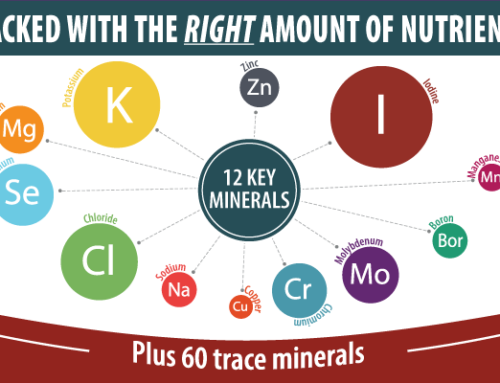What are the risks of low magnesium during pregnancy? This article is pulled from a talk by the late Dr. Mildred Seelig, who was perhaps the world’s most preeminent researcher on Magnesium. She makes the case that low magnesium during pregnancy is associated with low birth weight, gestational diabetes, stillbirth, and eclampsia. Not only that, but babies born with these problems have more heart problems later in life. On the flip side, there are many benefits of having a rich intake of magnesium during pregnancy. This is even more important to note because women are chronically deficient in magnesium worldwide. In countries where intake of magnesium during pregnancy is low, both the women and babies experience higher risks. This article will highlight exactly what the risks of low magnesium during pregnancy are.
The following article is written from excerpts that were transcribed from Dr. Seelig’s talk, with intermittent paraphrasing, slight rewording for clarity from the spoken word, or abbreviating as noted. Headers have been added. The full transcript of her talk is technical and references many sources, and you can read it by reaching out to us. This talk was sponsored by and given at the headquarters of Mineral Resources International in 2002.
And now Dr. Seelig’s talk…
When does Heart Disease begin?
How early does cardiovascular disease start? Would you care to guess? I found this paper written by epidemiologists where they made a very important observation. Would it shock you if I told you that there have been reports of babies developing myocardial infarction before they were born? That’s early.
Something occurred to me: What would be sensible to figure out is, what in the mother caused low birth weight?
Low Magnesium during Pregnancy Contributes to Low Birth Weight and Heart Risks
Inadequate maternal magnesium is a probable factor in low birth weight… I think that this may be a very important development: The evidence for preventing cardiovascular disease in children and adults through increased magnesium.
(Paraphrased) Researchers conducted a study which showed that babies born with a low birth rate had a higher risk for early cardiovascular disease and more risk factors than those born with a normal birth weight. The researchers reasoned that it was related to malnutrition, including a low protein and high carbohydrate/fat diet.
What these people found was that the survivors of low birth weight had a high incidence of hypertension, arteriosclerosis, heart disease of all sorts, dyslipidemia (that’s a high blood cholesterol) hypercoagulability of the blood, and diabetes or insulin resistance.
In essence, what I will be telling you is the basic problem is that the maternal magnesium was too low…What I am now saying is that their findings were that low birth weight causes an increase in cardiovascular vulnerability…
Magnesium during Pregnancy – The Link to Hypertension and Eclampsia
To start with, low magnesium levels are characteristic of pregnancy-induced hypertension, which is the beginning of eclampsia, the beginning of toxemias of pregnancy, and full-blown eclampsia. I suggest that low maternal magnesium is an important clue to solve first the mystery of low birth weight. We had several papers given at the Gordon Research Conference where they describe severe hypertension in animals that were magnesium deficient…
It has long been known (since 1925) that magnesium, intravenously, is a very good treatment to treat eclampsia.
Magnesium is also used as what we call an assist to tocolytic treatment. Tocolysis is what you give to a woman who has threatened preterm birth, when the uterus clamps down and it tries to expel the baby. You don’t want it to do that when it’s too early, so what they do is they give drugs… They found that they markedly improved the outcome and reduced the amount of tocolytic drugs that they needed by giving magnesium… so the baby is now more likely to be closer to the normal size at birth. This is an important observation. In other words, I’m building the case that magnesium deficiency is important in the prevention of eclampsia.
Okay, so I’ve shown you that the picture of magnesium deficiency is extraordinarily like the picture of eclampsia.
Are Women Deficient in Magnesium?
What they found was that in Germany, Finland, the United States, and Norway, there was an enormous range of what the women actually took in, in the form of magnesium from their food. (These are still self-selected diets of the women who are pregnant.) And, if you look at areas in Norway, they went up as high as 688 milligrams a day of magnesium from their diet and they retained as much as l66 milligrams a day of magnesium. That means that the baby (which has to develop) and the mother’s own tissues were getting much more magnesium, which is needed during pregnancy.
Related article: Magnesium Deficiency – Needs for Magnesium Not Met in Most People
Risks of Low Magnesium during Pregnancy can be Avoided
What do you think the recommendation of the organization to which we look for our advice (the National Academy of Science Food and Nutrition board) says as to how much we should eat? What do you think they recommend for magnesium for the pregnant woman? 400 milligrams. They don’t recommend nearly as much as what was in the literature to produce good results.
I have argued that we should have prophylactic magnesium supplements when a woman is pregnant. That is extremely important, because the typical intake of magnesium is inadequate… It has been shown that, at the very least, three-quarters of the American population are deficient in magnesium, and when it’s a pregnant woman, that’s bad news. Both in Hungary and in Germany, they found that magnesium being given to pregnant women had very beneficial results in that the babies were bigger, they didn’t have per-term birth, and the pregnancy was extended to a normal period instead of the babies being born early.
The Official Recommendations are Too Low
Inadequate magnesium intake by the mother is under 500 milligrams of magnesium a day. And what do they recommend? I told you, 400. It’s ridiculous. They undertook a study of 255 women and gave them 300 milligrams a day of magnesium from the time their pregnancy was diagnosed until term. They reduced the preterm birth from control of 11 percent to 8-and-a-half percent. Maybe, if they went up to 600, they would have done better; just a thought.
Now, I’m going to show you what the current recommendations are, again, this is one of the things that I’m unhappy about. 1998 to 2000, the latest recommendations by the people who are supposed to know (the National Academy of Science, the Food and Nutrition Board, and the Institute of Medicine) recommend a ratio of 310 to 320 milligrams of magnesium (I’m just talking about the women at this point) and calcium at 1000 to 1200. Extensive metabolic balance studies have shown that the ideal ratio is 2 to 1 of calcium to magnesium; they’ve got close to 3 or 4 to 1.
Related article: Magnesium for Asthma and Lung Health
Magnesium during Pregnancy in England
Doyle, Crawford, Wynn and Wynn in the 1980s, made the observation that a little over 7 percent of British babies are born under 2,500 grams. That’s a really low birth weight baby and they wondered why…They concluded that there should be large scale supplemental studies, which, incidentally, have not yet been done. But, they did undertake a small study and found that when they provided magnesium supplements starting in the first trimester (very much like the Hungarian study) they had larger babies. That is very important and I’ll show you why.
Thrombosis caused by Magnesium Deficiency
You get thrombosis from a risk of low magnesium during pregnancy, which damages the placenta and impairs the blood flow to the fetus. And if the mother’s blood flow doesn’t get to that area, the baby’s in a bad way. As a result, the baby has what we call fetal under-nutrition or another term is intrauterine , I used that term before, intrauterine growth retardation is where the baby is born at term but is tiny. It’s just too small…
Dr. Schecter showed in patients with myocardial infarctions and stable coronary disease that magnesium markedly inhibits platelet aggregation and stickiness. So…that first step of clotting doesn’t take place in the artery—and you don’t want it to take place in the artery. That’s what gives you strokes and heart attacks and damage. For the people who have diabetes, it results in the damage to the legs that results in them having their legs amputated. So I’m giving you some scare data but in the baby, for the baby, it damages the placenta
Now, Bonar, in England in 1971, showed that the thrombotic placental damage actually contributes to eclampsia…and basically, this is part of the reason that magnesium protects against low birth weight.
Oral Magnesium was a Benefit
Shechter’s work showed that oral magnesium treatment— not the intravenous— and that, of course, is of interest to you and your group, caused less platelet dependent thrombosis and this is in heart disease.
I’m going to refer to the effect of magnesium in heart disease because there hasn’t been as much work on how the mechanisms by which magnesium protects against the damage to the placenta and to the mother when she has eclampsia. So I’ve had to go to the basic work on the heart which is pertinent.
Related article: A Fascinating Look at Vitality and Health
Risks of Estrogen and High Calcium-to-magnesium Ratios
So, if you have a high calcium to magnesium ratio, there’s a real risk that you will activate coagulation in the arteries. You don’t want to go that way. Magnesium counteracts the coagulation cascade…that is increased by both estrogen and calcium. I’m going to remind you about something which you may not remember.
Do you remember the actress Patricia Neal? Remember she had a terrible stroke? She was a young woman who was on high doses of estrogen as a contraceptive…She was one of those who hit the headlines because she was a very successful actress and her career was almost terminated. She finally came back.
(Edited for clarity) I’ll give you another sad story about estrogen. In the forties or fifties, they knew that young women have much, much greater risk than men of myocardial infarction. This is classic, everybody knows this. So, they thought that estrogen would reduce the risk, but it was actually increasing it. As a result, there was a fashion for a short period of time, thank goodness, that when a man got a heart attack, what did some of the doctors do? They gave him estrogen. And…they sometimes got more heart attacks and strokes. So, they finally decided that was the wrong way to go.
Low Magnesium during Pregnancy and Birth Weight
One of the things that is important to remember: When babies are tiny, they are magnesium deficient. A study was done in 1962 where they analyzed the amount of magnesium in these tiny babies and the full-term babies…At the beginning of the third trimester, the [low-birth weight] babies had 133 milligrams of magnesium total…so obviously, these little-bitty babies, when they’re small, very small, are magnesium deficient.
Low Birth Weight is associated with Infant Death and Heart Risks later
What does that mean for the cardiovascular system?…What we know is that when you put experimental animals, regardless of the species (rodents, chicks, calves, pigs, dogs, right up to monkeys – every one of them) on a low magnesium intake when they are very young, they get severe arterial lesions, and those arterial lesions resemble those that have been detected on autopsy of stillborn infants and those dead in the first month through the first two and a half years of life. Frightening isn’t it?
The heart damage in infants that were stillborn or dead in the first month includes myocardial necrosis, cell infiltration, fibrosis, and calcification. These are babies stillborn or dead in the first month! That’s shocking…
Because the mother was having difficulty, the baby was obviously having trouble. They took electrocardiograms through the mother’s abdomen and found that the babies had had arrhythmias…
Myocardial Infarction in Utero is Not Rare, but it’s Usually Missed
And now I’m going to tell you something even worse! I found two papers by Franciose and Blanke. They were pathologists who said (and listen to this comment),
Myocardial infarction in utero is not rare but it’s usually missed because it involves the terminal arterials that are just under the endocardium.
Very often when pathologists look for an infarct, they look to the area around the large arteries— those are not the arteries affected in these infants that haven’t been born yet…. This is from 154 individual reported cases in the appendix of my book that I published in 1980.
The babies who lived or didn’t die until over one month to 2½ years also had very comparable arterial and myocardial lesions, but the lesions here were bigger. And the affected arteries were the larger arteries, and they were calcified—just like you see in adults.
Then, I undertook another study…And in the years from 1991 to 1998…so it’s not over—we’ve still got it. These were hearts that were not grossly abnormal. In other words, sometimes you get these lesions in the hearts that are malformed. These were really the normal hearts, but they had these infarcts and the babies died.
Summarizing the Benefits of Magnesium during Pregnancy
Now as I mentioned briefly before, if the mother is in good shape, the baby’s more likely developed normally. So what does the magnesium do to the mother that’s good? It favorably affects… endothelium factors. The vasodilators are increased, the anti-aggregators are increased and vaso-constrictors are decreased—when the woman is given magnesium. So you’re seeing to it that she herself is healthier and the placenta is not attacked. This protects her from…severe damage to the heart that occurs very shortly after birth… You’re keeping the mother in a better state.
In England – Magnesium in Pregnant Women
Okay, I told you how long ago they started treating eclampsia with magnesium between 1925 and 1926 in the United States. But the English have a problem with magnesium while 99 percent of the American physicians treated women with magnesium after they read this work from Zuspan and then the German work.
In this first line (referring to a slide), look at the percentage of the English—2 percent use magnesium. I think that’s shocking because all the data was there, but they wouldn’t read it or didn’t believe it. We call that the NIH phenomenon— if it’s Not Invented Here, it’s no good.
(Paraphrased) So, in 1995, there was a big multi-institution study reported in which…they discovered that Zuspan was right—magnesium was the best.
Magnesium is often Overlooked in Pregnant Women and Babies
I gave you evidence that low birth weight infants are magnesium deficient—however it’s caused…And how are they treated? Oh, not with magnesium by most places. They give them calcium and vitamin D, which intensifies the risks to the cardiovascular system.
So, I raise the question—might low magnesium and the calcium content of the diet…be a factor in early low birth weight?
(Paraphrased for clarity) A favorite news clipping I have seen is of a golden wedding anniversary that was attended by both parents of the bride. So these people live long, even though they had risk factors. A colleague saw this and was curious as to why. He said, “I couldn’t find any explanation. But I took some of their water, their deep well water. I couldn’t drink it; it tasted awful, but I took it back to the laboratories.” He said, “I’ve never seen water that had so much magnesium in it in my life.” It also has selenium in it, which is an antioxidant. Maybe that was it.
Related article: The Many Health Benefits of Selenium
Hard water Correlates to Lower Risks of Cardiovascular Disease
In Serbia, they have an almost built-in study, which indicates what I’ve been telling you is right…In West Serbia, their water was very high in magnesium and the calcium…was very low, and the cardiovascular disease mortality rate was extremely low. Two other regions were studied and reported about two years ago in East Serbia and North Serbia. There, they also had hard water but the water was very high in calcium and very low in magnesium, with very high cardiovascular disease mortality in both areas. So, we’re on the right track.
Dr. Mildred Seelig’s forty years of research established her as one of the world’s foremost magnesium researchers and reviewers.
Presented by Mineral Resources International (MRI) from a sponsored talk given at headquarters in Ogden, Utah in 2002.
Related: Mineral Resources International – 50 Years of Improving Global Health
Copyright 2019 by Mineral Resources International. All rights reserved.









